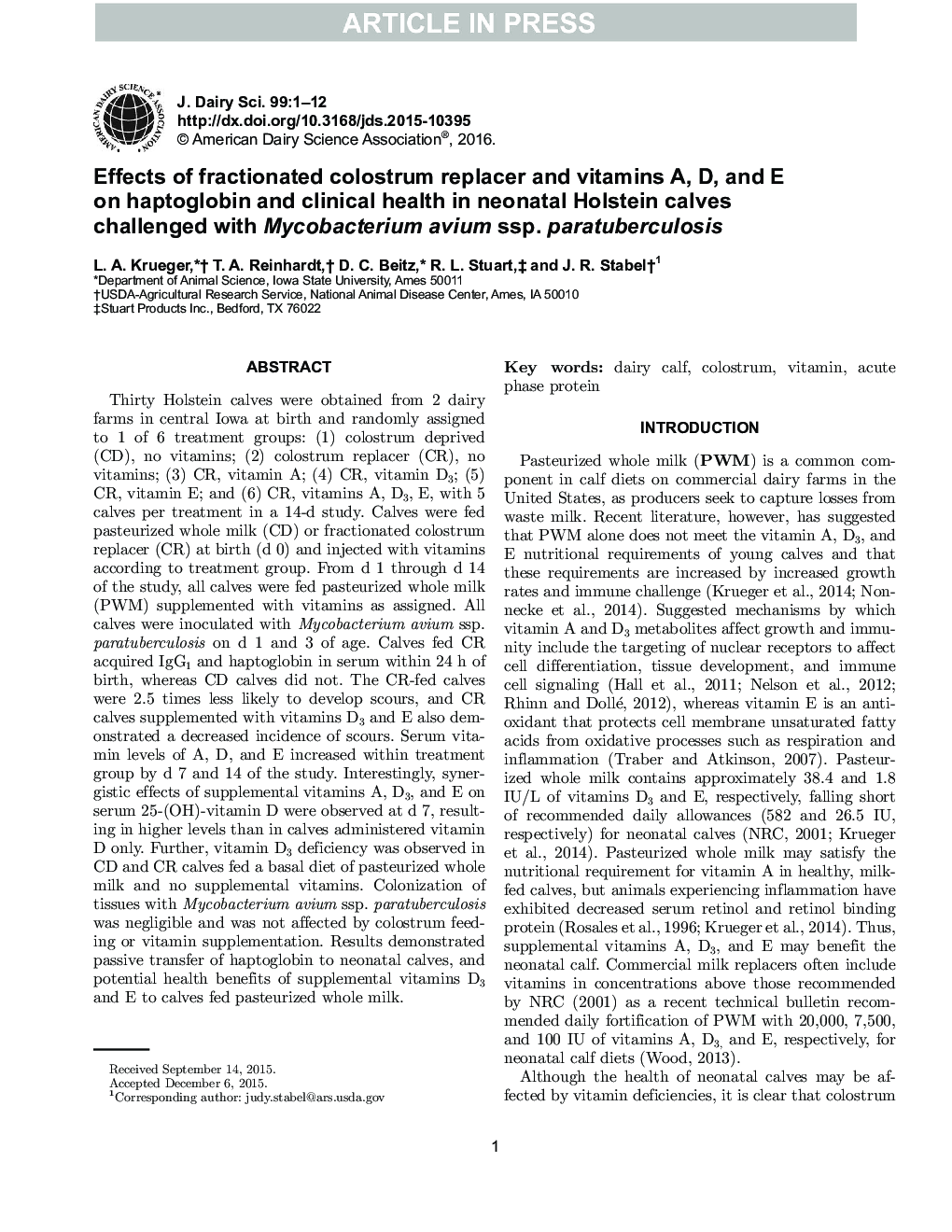| Article ID | Journal | Published Year | Pages | File Type |
|---|---|---|---|---|
| 10973094 | Journal of Dairy Science | 2016 | 12 Pages |
Abstract
Thirty Holstein calves were obtained from 2 dairy farms in central Iowa at birth and randomly assigned to 1 of 6 treatment groups: (1) colostrum deprived (CD), no vitamins; (2) colostrum replacer (CR), no vitamins; (3) CR, vitamin A; (4) CR, vitamin D3; (5) CR, vitamin E; and (6) CR, vitamins A, D3, E, with 5 calves per treatment in a 14-d study. Calves were fed pasteurized whole milk (CD) or fractionated colostrum replacer (CR) at birth (d 0) and injected with vitamins according to treatment group. From d 1 through d 14 of the study, all calves were fed pasteurized whole milk (PWM) supplemented with vitamins as assigned. All calves were inoculated with Mycobacterium avium ssp. paratuberculosis on d 1 and 3 of age. Calves fed CR acquired IgG1 and haptoglobin in serum within 24 h of birth, whereas CD calves did not. The CR-fed calves were 2.5 times less likely to develop scours, and CR calves supplemented with vitamins D3 and E also demonstrated a decreased incidence of scours. Serum vitamin levels of A, D, and E increased within treatment group by d 7 and 14 of the study. Interestingly, synergistic effects of supplemental vitamins A, D3, and E on serum 25-(OH)-vitamin D were observed at d 7, resulting in higher levels than in calves administered vitamin D only. Further, vitamin D3 deficiency was observed in CD and CR calves fed a basal diet of pasteurized whole milk and no supplemental vitamins. Colonization of tissues with Mycobacterium avium ssp. paratuberculosis was negligible and was not affected by colostrum feeding or vitamin supplementation. Results demonstrated passive transfer of haptoglobin to neonatal calves, and potential health benefits of supplemental vitamins D3 and E to calves fed pasteurized whole milk.
Related Topics
Life Sciences
Agricultural and Biological Sciences
Animal Science and Zoology
Authors
L.A. Krueger, T.A. Reinhardt, D.C. Beitz, R.L. Stuart, J.R. Stabel,
